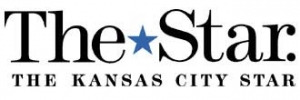Phone Survey of EcoTeam Participants — Portland, OR
Summary
Survey conducted by Portland Energy Office on behalf of all Partners in the Portland Sustainable Lifestyle Campaign July 1998
This report summarizes the findings of a phone survey of Fall 1997 Portland EcoTeam participants conducted by the City of Portland in July 1998.
Program Description
Since fall of 1996, the City of Portland has contracted with a nonprofit organization called Global Action Plan (GAP) to organize and support EcoTeams, small groups of neighbors who meet to discuss environmental issues and support each other in taking actions that conserve resources and protect the environment. Teams use a GAP workbook to guide them through a series of eight team meetings on specific environmental topics. At the end of the program, team members recruit new EcoTeams in their neighborhoods.
Research Objectives
Staff from the Energy Office, Traffic Management, Water Bureau, Environmental Services, and Office of Neighborhood Involvement designed the survey in consultation with Global Action Plan. The objectives of the study were to:
- Measure participants’ awareness of City of Portland sponsorship
- Gauge overall impressions of the program and identify areas for improvement
- Determine whether participants want the program to provide more local information
- Assess how the program has affected interaction among neighbors
- Measure participants’ interest in continued involvement with their EcoTeam
- Describe participants in terms of their involvement with neighborhood associations and environmental organizations
- Investigate how participants perceive the impact of the program on their daily actions
- Determine whether EcoTeam participation has led to increased volunteerism
Methodology
A phone survey was used to contact participants who completed the program in Fall 1997. Included in the study were teams that were 1) recruited by previous EcoTeams and 2) neighborhood based (as opposed to teams formed by members of a church or other organization). These criteria were selected to ensure that the study would provide the best information on how the neighbor-to-neighbor outreach program is functioning. Of the seventy-four households that participated in fall 1997, forty-seven met this screening criteria. At least three attempts were made to contact each of these forty-seven households.
The results are shown below:
Fall participants 74
Participants eligible for inclusion in the study 47
Completed interview 32
Wanted to be called back another time 8*
Unreachable 4
Declined interview 3
Moved 1
* These people expressed a willingness to be interviewed, but the interviewer was unable to schedule the interview in the days allotted for fielding.
For each team included in the study, at least two interviews were completed. Interviews were conducted during the first three weeks of July 1998, so at least six months had passed since participants had completed the program.
A summary of some of the key points follows and then a point by point analysis.
Summary/Highlights:
Ratings of aspects of the program: (scale 1-5; 1 being poor and 5 being excellent)
Program rating: 3.9
Experience with other members: 4.7
Support from coach: 4.2
Topic Guide usefulness: 4.0
Workbook usefulness: 4.0
Prep for recruiting new teams: 3.6
Average of all these ratings: 4.1
Those who:
correctly identified City of Portland as sponsor: 54%
correctly identified another specific funding agency:
Tri-Met 31.3%
Water Bureau 9.4%
Interact more with neighbors: 94%
Didn’t know their neighbors well before they joined: 62%
Since program conclusion, % who have met
at least once with their group: 33%
Expressed interest in further meetings
on at least one topic: 100%
Those who reported already being fairly eco-wise: 84%
Those who said the program has had an
on-going impact: 84%
Those who have shared their experience: 78%
Those who have increased their volunteer activities since completing the program: 28%
Detailed analysis: (See full tabulation of responses included at the end of this report).
Awareness of City Sponsorship:
Respondents were asked if they could identify any of the local organizations that provided funding for the EcoTeam program. Approximately half (54%) correctly identified the City of Portland, and nearly one third (31%) named Tri-Met which provides free bus passes to participants. Also mentioned were Portland General Electric (19%) and Metro (13%), who do not provide funding.
Program Ratings:
Participants were asked to rate the EcoTeam program on a scale of one to five where five is excellent and one is poor. They were then asked to rate specific aspects of the program. The ratings revealed that most participants have positive feelings about the program, and they greatly value the experience with their neighbors.
Eighty-four percent of respondents gave the overall program a rating of four or five. When we add respondents who gave the program a median rating of three it brings the total up to 96.9%. When asked to suggest improvements, the answers were divided. Most people did not have a response (84.4%). The strongest response was the suggestion to reduce the amount of paperwork (6.2%). Each of the other four responses were given by a single person. These were to:
- reach out to a broader audience
- have more direction from staff
- have less direction from staff, and
- were concerned about “high cost of program; unsure the program works”
The program received average ratings of 4.0 or higher in each of the following areas: Usefulness of the EcoTeam Workbook, usefulness of the Topic Leader Guides (outlines for meetings) and, support from the EcoTeam coach. These are areas that are each unique to the program itself and reflect well on the design of EcoTeams.
Respondents gave an overwhelmingly high rating (an average of 4.7) to their “experience with other team members”. The EcoTeam program provides a structure of support that seems to strongly support community-building at a neighborhood level. And, as is shown in later survey questions, can lead to increased participation in volunteer activities in the community once the program is complete.
When asked about the process of team recruitment, the average of the responses was 3.6, the lowest score in this section. The EcoTeam has made some notable improvements in this area (see section below).
Suggestions for improvement:
There were many excellent suggestions that were made by respondents for ways to improve the program. Many of these are already being incorporated in subsequent rounds of EcoTeams in Portland. To summarize some highlights:
“Reduce amount of paperwork”: The EcoTeam home office is currently modifying its assessment tools to be both more user-friendly and compact. This will significantly reduce the need for paper. Participants are also encouraged to send their Topic Leader Guides (outlines for meetings) back to the office for re-use.
“Coach should play a bigger role”: It is interesting to note that coaches have begun to express this same desire. As more and more coaches are actually coaching in their own neighborhoods, they they want to spend more time with their teams and deepen those relationships. The EcoTeam staff are encouraging coaches to drop in on their teams for a few minutes at every other meeting, so they are better able to support their teams and build strong connections with their neighbors.
“More support from the staff or their team in the replication process”: This part of the program is getting some very focused attention. The Portland campaign is in the midst of developing a new level of volunteer leadership that will specifically be trained to support teams in their inviting process by actually going out on the walks with them. These volunteers will also be the focalizing point in their neighborhoods for all advanced EcoTeam activity that happens once a team finishes the basic program. They will also integrate efforts between EcoTeams in their neighborhood for efforts that require cooperation from larger groups.
It is interesting to note that in the section that has to do with connecting with your neighbors (which got the highest average rating of 4.7) not a single suggestion was offered for how to improve that part of the program!
Local information:
Nearly two-thirds of respondents (63%) said they wanted more information on local environmental issues to help them take the actions in the EcoTeam workbook. Recycling was the most common type of local information requested, but many respondents could not identify other specific types of information that would also have been useful.
Since the time that the survey participants went through the program, the staff in Portland, with assistance from the Partners, have made some significant improvements to the system for providing local resources to EcoTeam members. They have compiled an impressive collection of over 100 brochures, booklets and kits, provided by the partners, to support EcoTeam participants in living more resource-efficient lifestyles. These materials are available for free, at the EcoTeam office and arranged, by topic, in a 96 slot mail-sorter. Participants are encouraged to come and select the materials they’d like to share with team members. This way people can customize their message to their neighborhood’s concerns and it minimizes wastage of unwanted brochures and information. Also partners and other local agencies have more direct and pertinent ways to reach the public.
Missed meetings:
A majority of respondents missed no meetings (59.4%); and no one reported missing more than one meeting.
Interaction with neighbors:
Almost everyone interviewed (93.8%) said they now have more interaction with their neighbors . This includes general on-street interactions such as chatting (28.1%) but people also report deeper connections such as picnics/potlucks (9.4%), sharing items / materials (18.8%), sharing ideas (12.5%) and carpooling (6.3%). This speaks well for the community-building aspects of the program as most participants (62%) reported they knew none or only one of the team members well prior to joining the team.
Interest in Continued EcoTeam Involvement:
Since the conclusion of the program, nearly one-third of the teams have gotten together again for parties, dinners, or discussions. Participants were asked whether they would be interested in attending occasional team meetings on a number of specific topics. All participants expressed interest in at least one topic, and most had several interests. The most popular meeting topic was natural gardening.
Percentage who are interested in EcoTeam meeting on this topic:
Natural gardening 75%
Neighborhood traffic 72%
Bike lanes in your neighborhood 69%
Planning for sustainable neighborhoods 69%
Global warming 63%
Reducing crime 59%
Regional solutions for housing and transportation problems 59%
Endangered salmon and steelhead 44%
Sharing rides with people in your neighborhood 31%
Other 31%
During this portion of the interview, some participants expressed a concern that they might be pressured to set up additional meetings and wanted to know what format the new meetings would take. Many emphasized the importance of working with existing programs and nonprofit groups that deal with the specific topic areas, rather than creating something new. These considerations should be incorporated in any future program designs.
Perceived Impacts of the Program:
Respondents were asked whether the EcoTeam program has had an “ongoing impact on your daily actions and decisions that affect the environment”; the majority (84%) said it had. They most commonly identified energy and water conservation as the most important changes they had made. The table below lists responses mentioned by at least two people (6% of the respondents).
Percentage specifying area of most important change:
Conserving water 38%
Conserving electricity 38%
Recycling more 25%
Avoiding excess packaging 22%
Composting 19%
Using Tri-Met 13%
Weatherizing/insulating 13%
Reducing garbage 9%
Reducing junk mail 9%
More aware of transit issues 9%
Reducing car trips 6%
Down to single car household 6%
Other 13%
Approximately three quarters of respondents (78%) said they had shared what they learned in the program with friends, neighbors, or co-workers who were not on their EcoTeam. Approximately one quarter of respondents (28%) felt they had increased their volunteer activities as a result of their EcoTeam participation, primarily referring to their volunteer work as EcoTeam coaches.
Involvement Prior to EcoTeam Participation:
Many EcoTeam participants were involved in environmental and neighborhood affairs prior to participating in the program. One quarter were not involved with these networks.
Percentages
Not involved with any environmental organizations
as a contributor, member or volunteer 34%
Never attended a neighborhood association meeting 53%
Involved with neither environmental organizations
nor environmental groups 25%
In a future survey it would be useful to distinguish the percentage of participants who were not involved as volunteers with environmental organizations prior to being on a team. When volunteers are included in the same category as people who contribute financially or as a member, it is impossible to track the specific rise in civic activity that being on an EcoTeam inspires.
Conclusion:
The objectives of this survey were clearly met. The questions asked in this survey provide a comprehensive look at the ways the EcoTeam program is perceived by its participants. The questions about volunteerism give a more detailed look into the population that is attracted to and participating. The questions about the impact of the program show that even six months after people have completed the program, they are still retaining, and in some cases furthering their actions to use resources more efficiently and are deepening relationships with their neighbors.
And as Linda Dobson, Assistant to the Director of Environmental Services said in her summary comments: “The report notes that the experience of working together as a neighborhood team was a very positive one. The respondents gave the program (content) itself, a similarly high approval rating, where 84% graded the program good to excellent. Although there is always room for improvement, the rating indicates a high level of satisfaction.”







